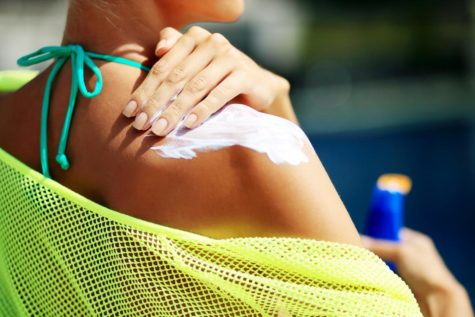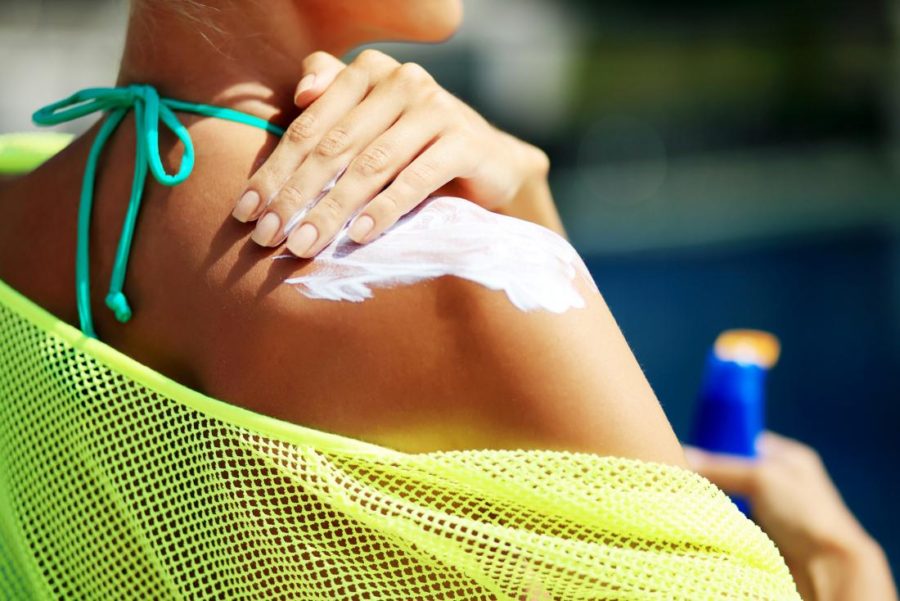Dangers of a Summer Tan
May 22, 2019
As summer quickly approaches, many people are preoccupied with their summer tan. This is achieved through various methods, such as spray-tans, tanning beds, and simply lying in the sun. However, there are more risks involved than what’s at surface level.
Spray-tans, although they have pretty mixed results, are actually the safest method the achieve a bronzed glow. Most sunless tanning products contain a color additive named dihydroxyacetone (DHA). This chemical acts with your dead skin cells and darkens them, hence resulting in temporarily darkened skin. This chemical has been declared safe by the Food and Drug Administration (FDA) for external application only. The only dangers with DHA are associated with inhaling it or getting it in your eyes. The FDA recommends making sure to wear goggles, nose plugs, and lip balm to protect yourself from any potential residue of your self-tanner. According to Mayo Clinic, artificial tanning products containing DHA are a safe way to achieve a tanned look without harmful ultraviolet rays.
Sun tanning, simply just sitting in the sun for prolonged periods of time, is one of most dangerous options. The exposure to the harmful ultraviolet rays can significantly increase your risk for skin cancer, premature aging, cataracts, and immune system suppression. A professor of dermatology and surgery at the Yale School of Medicine says, “If you’re getting enough sun to get a tan, then you’re getting too much”. Just one terrible sunburn ups the risk for skin cancers such as melanoma significantly. Any time that your skin is getting darker, it is important to keep in mind that it is getting damaged. The rates of melanoma, the deadliest form of skin cancer, have doubled since 1982. Skin cancer is now the most commonly diagnosed cancer in the United States.
Tanning beds that expose an individual to UV radiation are also relatively dangerous and harmful. The damage caused by the UV rays can lead to premature skin aging and skin cancer. According to the Skin Cancer Foundation, those who utilize tanning beds before they turn thirty-five years old increase their risk for harmful skin cancer by 75%. The Department of Health and Human Services includes tanning beds on its list of known carcinogens. This indoor tanning method causes an estimated 400,000 cases of skin cancer in the United States each year.
To safely get a tan outside, professionals recommend working towards a gradual tan. It is possible to get a tan when you are wearing sunscreen, protecting your skin with SPF. The short-term results are not as immediately noticeable, but achieving a summer tan with this method is safer. Protection from the sun’s harmful UV rays is essential, and extremely important to maintaining your health.
Knowing the best option for you and your skin is significant. Make sure to take this information into consideration this summer, no matter what method you use to get a summer tan.

Sources:
Novak, Sara. “How Safe is Spray Tanning?”, 3 January 2012. HowStuffWorks.com.
Kubota, Taylor. “What’s Worse: A Fake Tan Or A Real One?”, 28 April 2014. Huffpost.com.
Mayo Clinic Staff. “Sunless tanning: What you need to know”, 12 May 2016. MayoClinic.org.
Skin Cancer Foundation. “Tanning”, 2019. SkinCancer.org.
Consumer Reports. “There is a safe way to get a suntan”, 6 August 2018. WashingtonPost.com.





















